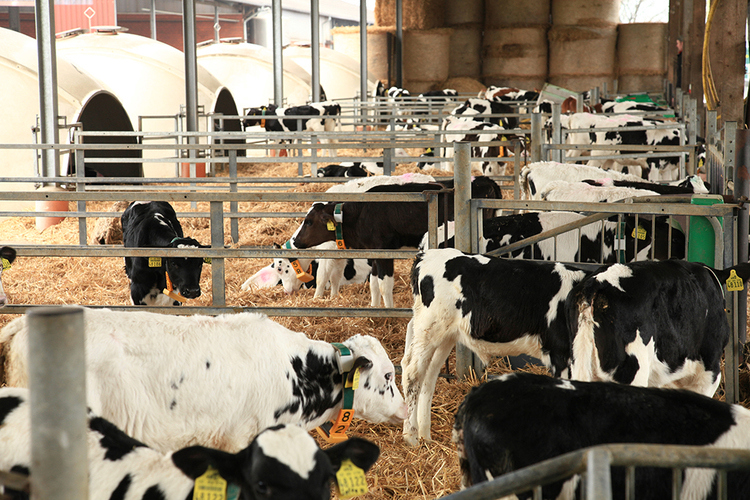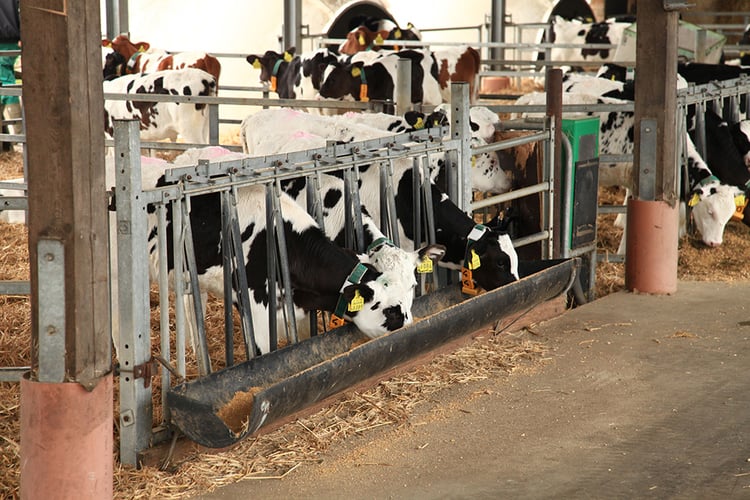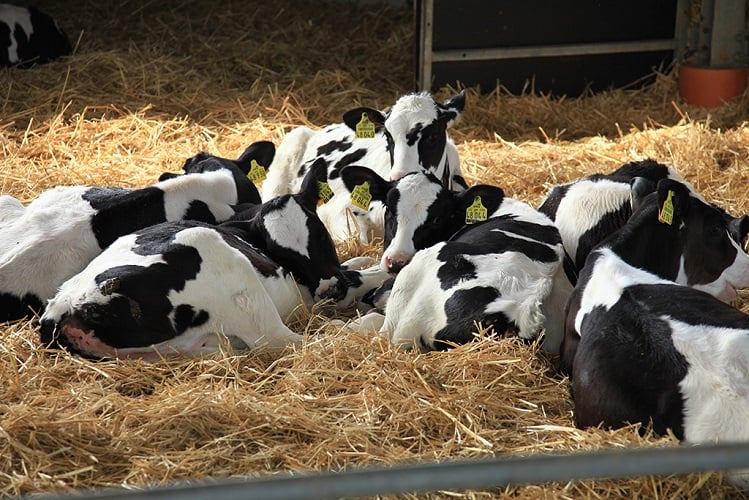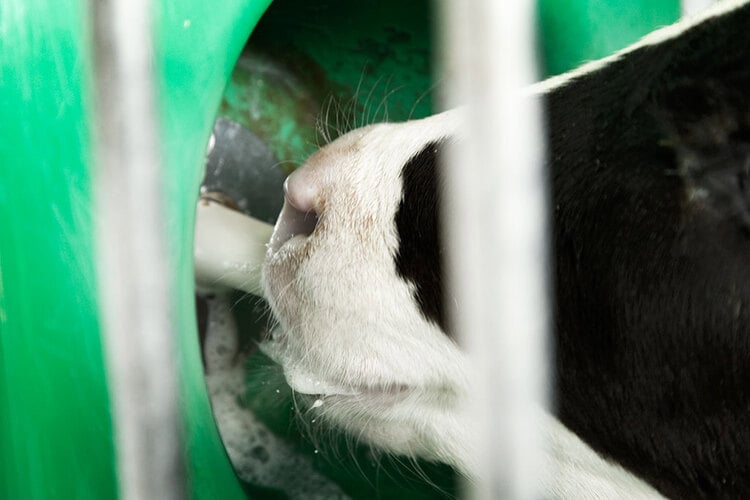- LifeStart
- Weaning strategies
Key takeaways from the research:
-
Weaning is a critical time for calves in terms of physical stresses.
-
Starting the weaning process later reduces health problems in calves.
-
Elevated planes of nutrition pre-weaning improve growth during weaning and offer long term growth advantages post-weaning.
-
Using a step-down method during weaning reduces stress in calves resulting in a greater ability to handle the changes.

Calves fed high planes of nutrition should be weaned at a later age following a step-down weaning process
During the weaning period, calves are more susceptible to disease. Levels of gastrointestinal tract stress, diarrhoea and other diseases can be either exacerbated or curtailed in the function of how and when weaning occurs. The quality and quantity of feed introduced during this critical period can also impact calf health and welfare.
Higher calf growth rates prior to weaning can set the stage for continued growth post-weaning and a lifetime of enhanced productivity. If farmers opt for the health and performance benefits of a higher plane of nutrition prior to weaning, optimal weaning protocols should be applied to support future performance.
Weaning at a later age improves health and performance
Even with an optimal weaning protocol, weaning increases stress in calves as one digestive system replaces another. Yet, several recently published studies show that the choice to wean later, rather than earlier can have significant health and performance benefits.
Gastrointestinal tract permeability, present during the pre-weaning period, can leave calves vulnerable to pathogens once the weaning process begins. Wood et al.[1] found that, as calves age, the permeability of the GIT decreases, increasing resistance to diarrhoea, the leading cause of calf death. Their data suggests that by weaning later, calves benefit from a fortified (less permeable) GIT, thereby reducing one important factor of vulnerability.
Meale et al.[2] showed that later weaning reduces systemic stress as indicated by a more gradual increase in ßHBA over the weaning process. ßHBA is an indicator of better rumen development and a gradual increase suggests successful weaning. The same study proved that later weaning also holds performance benefits. While some reduction of average daily gain is inevitable during weaning, the study found that later weaning mitigates these losses. Calves weaned at 12 weeks had an average body weight that was 4.2% higher than that of the calves weaned at 8 weeks.
Eckert et al.[3] found that later-weaned calves (in this study 8 weeks vs. 6 weeks) had 50% higher average daily gain during weaning and 66% higher average daily gain one week after weaning. Most importantly, these higher growth rates were maintained for months beyond weaning. In the study, at the age of three months, the calves weaned at 8 weeks were 9 kg heavier than those weaned at 6 weeks. At the age of five months, the gap between the two groups had grown to 11 kg.
Gradual weaning in calves fed a high plane of nutrition results in a further improvement of performance
Eckert et al.[3] also showed that when combined with an elevated plane of nutrition, later weaning and a step-down transition to solid feed positively impacts well-being and performance. A protocol including a high pre-weaning level of nutrition, combined with a step-down approach to solid feed and weaning at 8 vs. 6 weeks resulted in a smoother transition from liquid to solid feed with fewer signs of systemic and digestive stress. Also, better pre-weaned nutrition leads to greater overall weight gain, especially in the calves weaned at 8 weeks. As mentioned, these advantages didn't stop at weaning but included long-term growth advantages.
Conclusion
While there are many important variables involved in the weaning process, the research cited here suggests that an elevated plane of nutrition pre-weaning, combined with a step-down process at weaning and a later age at weaning, will improve calf health and will result in lifetime performance benefits.
References
[1] S.J. Meale, L.N. Leal, J. Martin-Tereso and M.A. Steele, "Delayed weaning of Holstein bull calves fed an elevated plane of nutrition impacts food intake, growth and potential markers of gastrointestinal development" Animal Feed Science and Technology 209 (2015) 268-273.*
[2] E. Eckert, H.E. Brown, K.E. Leslie, T.J. DeVries and M.A. Steele, "Weaning age affects growth, feed intake, gastrointestinal development, and behavior in Holstein calves fed an elevated plane of nutrition during the preweaning stage" Journal of Dairy Science Vol. 98 No. 9, 2015.*
[3] K.M. Wood, S.I. Palmer, M.A. Steele, J.A Metcalf and G.B. Penner, "The influence of age and weaning on permeability of the gastrointestinal tract in Holstein bull calves" Journal of Dairy Science Vol. 98 7226-7237 No. 10, 2015.*



